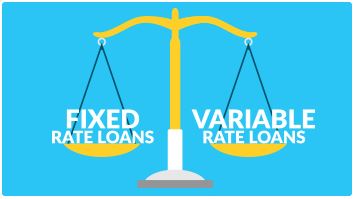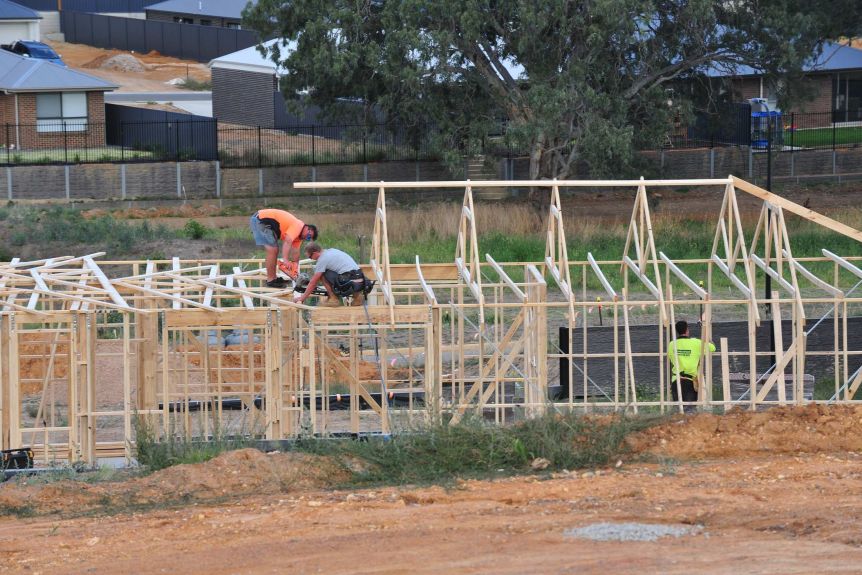
Post On: 21/09/2020
As you begin your journey towards homeownership, one of the most important decisions you’ll have to make involves the structure of your loan. The two main options available to you are a fixed rate loan and a variable rate loan, but knowing how to best structure your impending mortgage can be a confusing proposition.
The most important thing to understand is that one of these options is not inherently “better” than the other. They each have their own pros and cons, and you should choose the loan structure that makes the most sense for your personal circumstances and preferences. Only by first considering your long-term plans for the loan, along with your overall financial goals, will you be able to make the best decision that’s right for you.
The most important thing to understand is that one of these options is not inherently “better” than the other. They each have their own pros and cons, and you should choose the loan structure that makes the most sense for your personal circumstances and preferences. Only by first considering your long-term plans for the loan, along with your overall financial goals, will you be able to make the best decision that’s right for you.

Post On: 22/08/2020
As long as you meet the requirements for the Home Builder Scheme, you can get a grant of $25,000 to build a new home or to substantially renovate an existing home. This program is designed to improve the residential construction market, encouraging home buyers to build new homes and renovate old homes.
The following requirements apply:
The following requirements apply:

Post On: 30/07/2020
A major bank has announced that home buyers only need to pay $1 in Lenders Mortgage Insurance (LMI) if they are borrowing 85% of the property value.
This offer for first home buyers is effective from 13 July 2020.
One of the pain points for many first home buyers has also been saving for a deposit.
With the $1 LMI offer, first home buyers can buy their property sooner by reducing the expense of LMI and saving thousands of dollars.
This offer for first home buyers is effective from 13 July 2020.
One of the pain points for many first home buyers has also been saving for a deposit.
With the $1 LMI offer, first home buyers can buy their property sooner by reducing the expense of LMI and saving thousands of dollars.

Post On: 14/07/2020
If you are in a position where you have a level of certainty regarding your income, you have an opportunity to take advantage of another likely market dip for the second time in 18 months since the Royal Commission started which is unprecedented. So, if you missed out prior to the election 2019, this may be your OPPORTUNITY.
At this point, the banks have not yet changed their lending criteria and a number are still providing significant cashback offers to refinance. Below is a simple strategy you may want to consider to ensure you have sufficient cash available to ride out the medium-term and set yourself up for the future and potential opportunities.
At this point, the banks have not yet changed their lending criteria and a number are still providing significant cashback offers to refinance. Below is a simple strategy you may want to consider to ensure you have sufficient cash available to ride out the medium-term and set yourself up for the future and potential opportunities.

Post On: 10/03/2020
If you're self-employed or you own your own business, you’ll know all about the challenges of admin - keeping your accounts, finances and income flow all on track.
It's not easy. The last thing you need is a ‘no’ on your home loan application because of the paperwork.
But here's some good news. There are alternatives. Here are four steps that anyone who’s self-employed can take to help get a home loan sorted.
1. Sort out the paperwork you do have
When mortgage lenders are looking at a home loan application, they are usually looking for a regular level of income that shows them you’re able to make the proposed repayments. Start by showing paperwork that tells them you’ve been self-employed for an ongoing amount of time and that you do earn a regular amount each month. Being able to demonstrate these things to them will help build your case.
It's not easy. The last thing you need is a ‘no’ on your home loan application because of the paperwork.
But here's some good news. There are alternatives. Here are four steps that anyone who’s self-employed can take to help get a home loan sorted.
1. Sort out the paperwork you do have
When mortgage lenders are looking at a home loan application, they are usually looking for a regular level of income that shows them you’re able to make the proposed repayments. Start by showing paperwork that tells them you’ve been self-employed for an ongoing amount of time and that you do earn a regular amount each month. Being able to demonstrate these things to them will help build your case.

Post On: 04/03/2020
When you are thinking about your first home, finding out you should be thinking about saving for a 20 per cent deposit can seem really overwhelming. The good news is that for some of the big non-bank lenders like Pepper Money, a minimum deposit required on some products can be as little as five percent of the purchase price of the property, but it’s always a good idea to have a deposit of 20 per cent or more if possible. So let’s look at how to get there.
First work out what you can actually afford. There are lots of online calculators that can give you an estimate of what your repayments could be, based on your home loan amount and interest rate you think you’ll be paying. Once you get an idea of the sort of repayments you would be able to make you can decide on your target deposit.
First work out what you can actually afford. There are lots of online calculators that can give you an estimate of what your repayments could be, based on your home loan amount and interest rate you think you’ll be paying. Once you get an idea of the sort of repayments you would be able to make you can decide on your target deposit.

Post On: 14/02/2020
Buying your first home? Here are 7 things you need to know.
Bigger deposit, better position
While some lenders can offer low-deposit loans for less than 5 percent of the purchase price, saving around 20 percent can offer you big benefits:
• Access to a wider pool of lenders and products
• You need to borrow less money overall
• It’s a clear sign to potential lenders that you’re good at managing money.
If you’ve saved less than 20 per cent there are lenders who can help, but deposits of that size may require Lenders Mortgage Insurance (LMI). This adds more fees and another layer of assessment of your suitability because LMI providers are separate businesses and often have quite strict rules.
Bigger deposit, better position
While some lenders can offer low-deposit loans for less than 5 percent of the purchase price, saving around 20 percent can offer you big benefits:
• Access to a wider pool of lenders and products
• You need to borrow less money overall
• It’s a clear sign to potential lenders that you’re good at managing money.
If you’ve saved less than 20 per cent there are lenders who can help, but deposits of that size may require Lenders Mortgage Insurance (LMI). This adds more fees and another layer of assessment of your suitability because LMI providers are separate businesses and often have quite strict rules.

Post On: 04/02/2020
Sometimes, just getting through Christmas can be enough of a slog without worrying about the New Year. But if buying a home is top of your priorities, here are 7 things to think about that could definitely improve your chances of a mortgage.
1. Don’t lose sight of your debt
New Year is a great time to pay down existing debts and avoid taking on any new ones. New Year sales might be tempting but stop – think again. Getting your own home is now your number one priority.
Make sure you pay all your bills on time because lenders will always look very closely at your credit file. And they want to feel confident you can manage those home loan repayments.
1. Don’t lose sight of your debt
New Year is a great time to pay down existing debts and avoid taking on any new ones. New Year sales might be tempting but stop – think again. Getting your own home is now your number one priority.
Make sure you pay all your bills on time because lenders will always look very closely at your credit file. And they want to feel confident you can manage those home loan repayments.

Post On: 21/01/2020
The best way of making an offer that is below the asking price is to know the reason why the house is for sale. If you want to make a lower offer than the asking price, it’s a good idea to research and find out why the seller is putting their home on the market.
We believe this is the best way of having an offer accepted.
Before talking about the details of this strategy, you need to know that a house purchase offer has two key elements:
1 – how much you can afford to pay
2 – the T&Cs that go with the offer you make
Coming up with terms and conditions that have value...
We believe this is the best way of having an offer accepted.
Before talking about the details of this strategy, you need to know that a house purchase offer has two key elements:
1 – how much you can afford to pay
2 – the T&Cs that go with the offer you make
Coming up with terms and conditions that have value...

Post On: 21/01/2020
The Australian Bureau of Statistics says that in Australia, the average size of loan for a home is around $400,000. Since the majority of people take more than 30 years to repay their loan, they will incur a huge $319,820.45 worth in interest (if we assume a 4.5% interest rate).
If homeowners reduced their payment term to 25 years, they could save more than $60k. Bearing this in mind, we have produced a list of tips that will give you a few ideas on how to reduce the amount of interest you pay and be mortgage-free...
If homeowners reduced their payment term to 25 years, they could save more than $60k. Bearing this in mind, we have produced a list of tips that will give you a few ideas on how to reduce the amount of interest you pay and be mortgage-free...

Post On: 21/01/2020
This term might seem gobbledegook but the concept is pretty simple. Moreover, it is a great option for investors who are looking for an investment property. Get ready for a basic lesson on investments.
Negative gearing - what is it?
For people working in investments, ‘gearing’ is another word for borrowing to buy. For investments in properties, it means getting a loan from a bank or other financial institution. Negative gearing means paying more in interest on the loan in comparison to income generated from renting out the property.
Negative gearing - what is it?
For people working in investments, ‘gearing’ is another word for borrowing to buy. For investments in properties, it means getting a loan from a bank or other financial institution. Negative gearing means paying more in interest on the loan in comparison to income generated from renting out the property.



